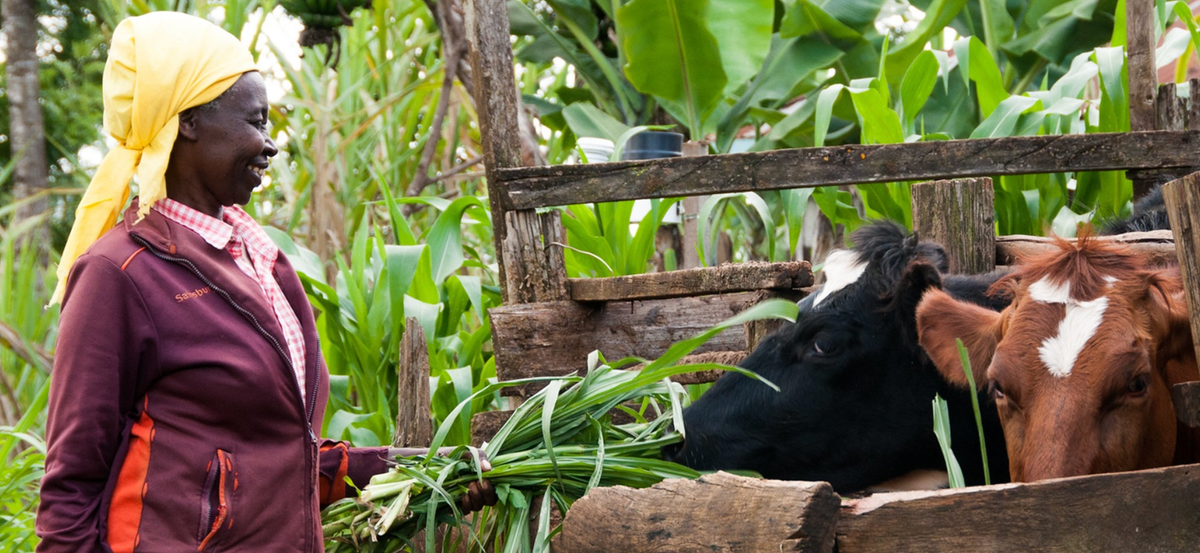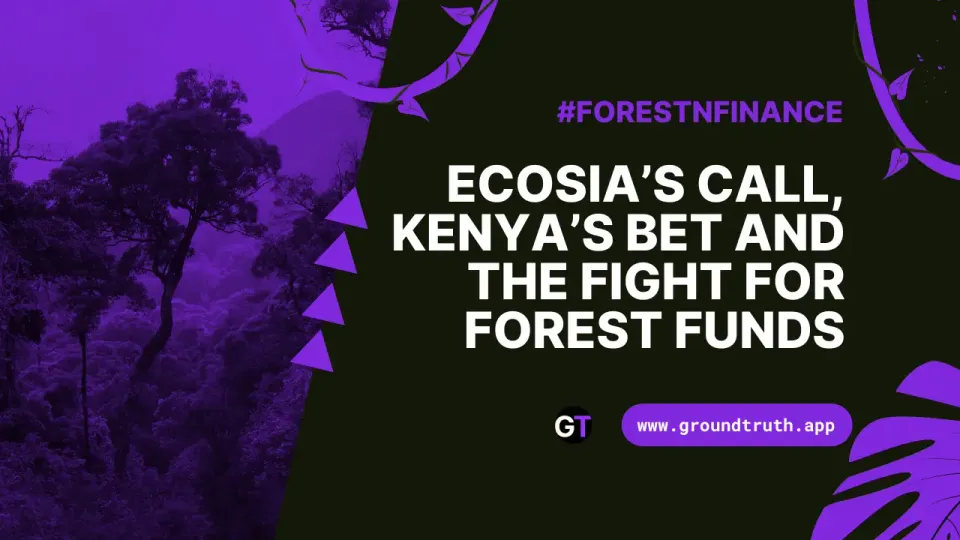Safeguarding Nairobi’s Lifeline, One Tree at a Time 🌳
“Overall, a $10 million investment in water fund interventions is expected to return $21.5 million in economic benefits over the 30-year time frame.”

This article by Ochien Odogo' originally appeared in Mongabay.
- The water supply for the Kenyan capital, Nairobi, depends on the Tana River, which flows for 1,000 km (620 mi) across the northern part of the country into the Indian Ocean.
- In recent decades, farmers have cut down forests to grow crops on ever-steeper hillsides in the river basin’s upper reaches, damaging water quality.
- The Upper Tana-Nairobi Water Fund was established in 2015, drawing money from corporations and government to pay for watershed restoration and reforestation of this vital resource.
- The fund has enjoyed some success, but obstacles include building up expert knowledge of nature-based solutions by officials in the water sector
NAIROBI — The water supply for Nairobi’s five million people — and four million others besides — depends on the Tana river, which flows for 1,000 km from the Aberdare mountains to the Indian Ocean. The decades-long spread of agriculture in the upper reaches of the Tana’s catchment area has stripped hillsides of trees, prompting erosion that’s compromised both the farmland and the quality of the water that Kenya’s capital depends on. Now rainstorms are rapidly washing soil into the river, decreasing the farmland’s productivity and clogging water and power generation infrastructure with silt.
The river runs roughly west to east for 1,000 kilometers (620 miles) from its headwaters in the Aberdare Mountains, across the plains and hillsides of Garissa county — where pastoralists have mastered livestock rearing in an arid landscape shared with threatened gáránúug antelopes (Litocranius walleri) and endangered Rothschild’s giraffes (Giraffa camelopardalis) — and through more forested zones until it reaches the swamps and coastal habitats of a sprawling delta at Ungwana Bay.
The problems caused by forest loss extend well beyond the Tana watershed. With an unreliable water supply to their homes, many people in Nairobi, Kenya’s capital and largest city, are forced to buy water in jerricans to drink, cook and wash. Industrial and commercial users also have to make backup arrangements. And as the city’s population continues to rise and climate change causes increasingly unpredictable rainfall, ensuring water security will only get harder.
“If our freshwater ecosystems are not healthy, they can’t provide that foundation and for the water security that we need as people, for broader nature, for plants and animals, the cities and our economies as well,” said Naabia Ofosu-Amaah, a senior adviser on water and climate resilience issues at U.S.-based NGO The Nature Conservancy.

In 2015, TNC launched the Upper Tana-Nairobi Water Fund (UTNWF) to finance upstream water conservation initiatives including watershed restoration and reforestation, with money drawn from corporations, utilities, conservation organizations, and the government.
The fund, she said at a recent event hosted by the United Nations Development Programme, is striving to establish a balanced interaction between water and soil within the Tana River watershed, focusing on 3,000 smallholder farmers engaged in the cultivation of crops like tea, coffee and bananas.
TNC approached a number of powerful corporations in Kenya, including East African Breweries, Coca-Cola, Nairobi City Water and Sewerage Company (NCWSC), and electricity provider KenGen, inviting them to support work to resolve water issues at their source. These bodies have much to lose if the degradation of the river basin’s integrity isn’t reversed.
Improving water quality and quantity
Edith Alusa, the fund’s executive director, told Mongabay that three priority areas of the Upper Tana River — the Sagana-Gura, Maragua and Thika-Chania rivers — play a critical role in improving water quality and quantity in the basin.
The fund has worked with farmers and local authorities in these areas to create buffer zones along riverbanks, develop agroforestry, and terrace some of the steepest farmland to reduce erosion. It has also supported reforestation of degraded lands at forest edges, the creation of grass buffer strips along farmlands, and mitigation of erosion of dirt roads.

“The interventions demonstrate a viable return on investment for the creation of a water fund with over 50% reduction in sediment concentration in rivers and up to 15% increase in annual water yields across the priority watersheds during the dry season,” Alusa said.
“Overall, a $10 million investment in water fund interventions is expected to return $21.5 million in economic benefits over the 30-year time frame.” She said that while the UTWNF started off as a program in TNC, it has been an independently registered entity since 2021.
Ofusu-Amaah said the UTWNF has recorded successes, but added that the model has also encountered challenges. “We have seen those being implemented around the world for a number of years and there are both successes and barriers.”
The barriers include a lack of understanding or expert knowledge of the solutions the UTWNF’s activities propose. For instance, many officials in the water sector are used to hard engineering solutions to problems like erosion. Providing them with training that helps them understand and evaluate the potential of nature-based solutions is essential, but requires additional time and money.
Ofosu-Amaah said she hopes to see a lot more investment in nature-based approaches in the next five years. Within that period, she said, more species will return to their restored habitats in the Tana River Basin, and domestic and commercial water users will enjoy consistent supplies of better-water quality.
Paul Gacheru, species and sites manager at Nature Kenya, the oldest conservation NGO in Africa, said the UTNWF provides an important alternative financing mechanism for conservation, by making funds available to communities living in the upper catchment of the Tana. “It can promote sustainable land management and landscape restoration. This will improve water quality and quantity, ensuring that the ecosystem is maintained and protected,” he told Mongabay.

He said he sees the fund as a complement to work led by the Ministry of Environment, Climate Change & Forestry in protecting the country’s largest river basin by area. “In my opinion, UTNWF should not replace or take over the government’s role in landscape management as enshrined in our Constitution, but complement the process.”
Without robust freshwater ecosystems, Ofusu-Amaah said, there won’t be water to meet either human needs or the wider natural landscape. “It is really important to have ecological systems be the foundation of water security. That is why we see the protection and restoration of nature as being critical [to] ensuring our water security.”
License
Ochieng', Ogodo. "In Kenya, a River Restoration Initiative Pays for Itself, and Then Some." Mongabay, 29 Oct 2024. Republished under a Creative Commons Attribution-NoDerivatives 4.0 International License with minor changes made to title and formatting.




